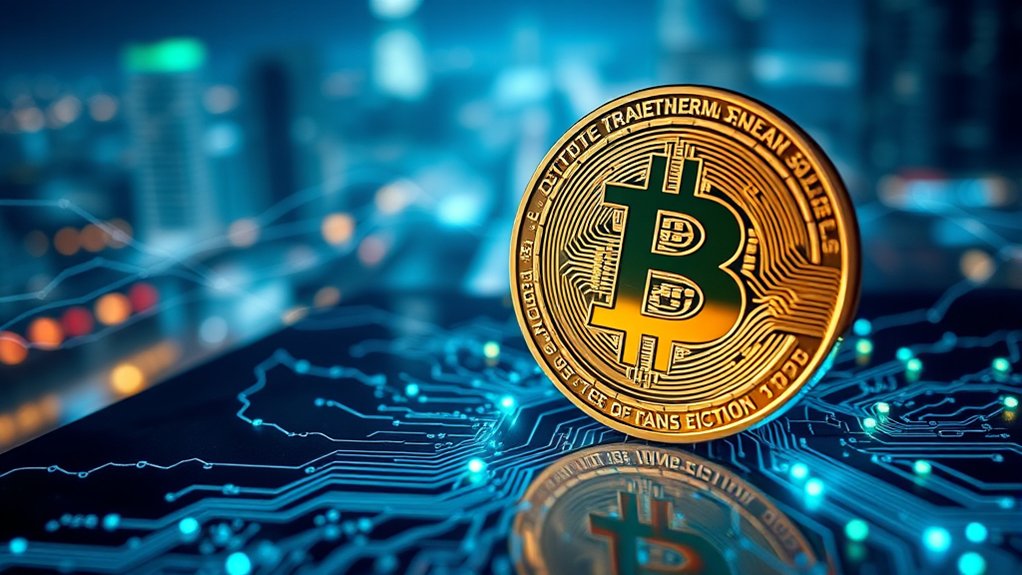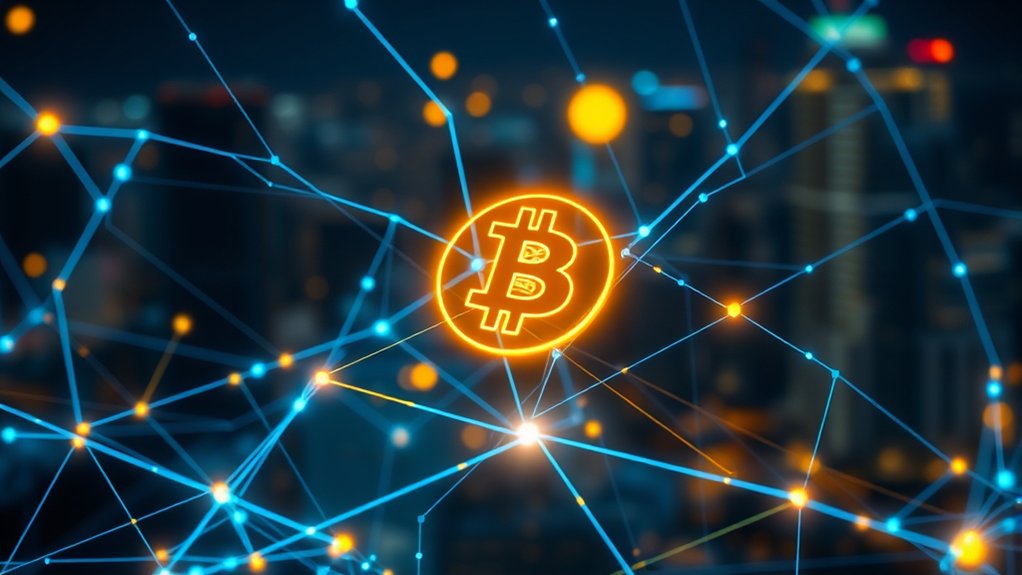Bitcoin Lightning is a layer 2 fix for the Bitcoin network. It speeds things up and slashes fees. Imagine sending money without waiting for the slow, jam-packed main blockchain. Here, users lock funds in a multi-sig wallet and then make countless transactions off-chain. Only when they close the channel does the final deal hit the main blockchain. Smart contracts handle the nitty-gritty, ensuring everything stays fair. Curious about its perks and pitfalls? There’s more to unpack.

Bitcoin Lightning Network isn’t just a fancy term thrown around by crypto enthusiasts; it’s a Layer 2 solution that aims to save Bitcoin from itself. Imagine a world where Bitcoin transactions don’t take forever and cost a small fortune. That’s where the Lightning Network swoops in. It’s designed to enhance scalability and reduce those pesky transaction costs that make people cringe. By allowing off-chain transactions, it cuts down on the congestion that bogs down the main Bitcoin network. No more waiting hours for a transaction to confirm!
So, how does this miracle happen? It’s all about payment channels. You start by locking Bitcoin in a multi-signature wallet. Then, boom! You can perform multiple transactions off-chain, and they’re all recorded locally. When you’re done, you close the channel, and just like that, a final transaction is recorded on the main blockchain. It’s quick, it’s cheap, and it helps lighten the load on the Bitcoin mainnet. Payment channels allow for this seamless flow of transactions without needing to constantly interact with the main blockchain. Additionally, DEXs often utilize smart contracts to facilitate transactions in a decentralized manner, which is similar to how the Lightning Network operates.
Let’s talk about smart contracts. They’re the unsung heroes here, governing the entire process from opening to closing payment channels. They guarantee everything goes according to plan, acting like a digital referee. This means transactions can happen without a third party—trustless and secure. Additionally, the Lightning Network provides an alternative road that operates parallel to the Bitcoin blockchain, enhancing overall transaction efficiency.
Sure, there are some risks, like centralization and the fact that you can’t make transactions offline, but hey, nothing’s perfect, right?
The benefits? Mind-blowing speed, lower fees, and increased privacy. Transactions occur off-chain, keeping your business discreet.
But it’s not all rainbows. The Lightning Network has its challenges. Centralization risks loom, and it can be complex for the average Joe to manage. Plus, adoption is still a work in progress.
In the end, the Lightning Network has the potential to revolutionize how people use Bitcoin daily. It’s a game-changer, albeit with some kinks to work out. But that’s life in the fast lane of crypto!
Frequently Asked Questions
Is Bitcoin Lightning Safe for Everyday Transactions?
Is Bitcoin Lightning safe for everyday transactions? Well, it’s complicated.
Sure, multi-signature tech adds a layer of security, but users still need to keep their channels open. That’s a commitment!
And while fraud penalties sound nice, they don’t guarantee safety.
Plus, if the network isn’t widely accepted, good luck finding places to spend those satoshis.
Fast and cheap? Yes! But is it foolproof? Not even close.
Buyer beware, folks!
Can I Use Bitcoin Lightning for International Payments?
Absolutely, Bitcoin Lightning can be used for international payments.
It’s fast, cheap, and a refreshing change compared to traditional banking. Why wait days and pay hefty fees? With Lightning, transactions happen in a snap.
Sure, both parties need compatible wallets, but that’s a minor hurdle. It’s like upgrading from dial-up to fiber optic.
The world of payments just got a serious glow-up, and it’s about time!
What Fees Are Associated With Bitcoin Lightning Transactions?
Bitcoin Lightning transaction fees are like a welcome change compared to traditional methods.
You’ve got routing fees from nodes, plus a base fee—usually just 1 Satoshi. Yeah, that’s right, just one! Overall, costs are less than a cent.
But hold on! Fees can vary wildly depending on the nodes involved.
And if you need to settle on the blockchain, expect those standard Bitcoin fees to crash the party.
How Do I Set up a Bitcoin Lightning Wallet?
Setting up a Bitcoin Lightning wallet? It’s not rocket science, but it’s not a walk in the park either.
First, pick a wallet—custodial or non-custodial, your call. Download it from a legit source, because who wants malware?
Then, fund that bad boy with Bitcoin. Open payment channels; it’s like opening a door to transactions, but make sure it’s not a revolving one.
Keep an eye on your channels. Risky business, folks!
Are There Any Limitations on Bitcoin Lightning Payments?
Bitcoin Lightning payments? They come with a bag of limitations.
Scalability issues? Yep, they struggle to handle loads of transactions. Costs don’t always dip like people hoped.
Then there’s security—malicious attacks could bring chaos.
Adoption? Bitcoin’s volatility makes it a tough sell.
And let’s not forget about channel liquidity; high-value transactions? Good luck with that.
It’s a work-in-progress, folks. Not exactly a smooth ride for everyday payments.





